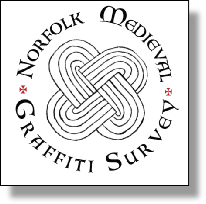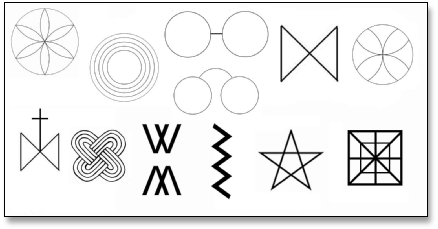








The first thing to understand is that these markings have nothing really to do with witches or witchcraft, despite the popular name, and can best be thought of as ‘anti-witch marks’.
In the very simplest of general terms these markings are believed to turn away, or ward off, evil. Ritual Protection Marks are defined as symbols that have a overt 'apotropaic' function - taken from the Greek, and meaning to ‘turn away’. Apotropaic markings in general are often thought of as acting as a form of sympathetic magic, where, for example, the ritual scorching of newly built timbers would subsequently protect the building from fire and lightning strikes; quite literally 'fighting fire with fire'. However, whilst some ritual protection markings found in medieval churches may follow this form, the vast majority appear to be derived from a more complex system of beliefs. They can be considered to be the physical manifestations of a system of belief that thought in multiple layers of spiritual defence; essentially each symbol can be considered a protective marking that operated in addition to, but not separate from, the prayers of the medieval church.
A strict definition of what does, or does not, constitute a ritual protection mark (witch mark) is fraught with difficulties, and can depend upon a number of not entirely related factors. The same marking used in different circumstances and contexts may have widely differing meanings, not all of which can be considered apotropaic. As Philip Zeigler has observed, 'in medieval history, it sometimes seems that the more precisely a question is defined, the more certain it is that no answer will be forthcoming'.












